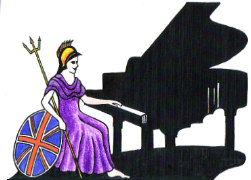Teachers, Accompanists and Piano Entertainers in the UK

UK Piano Page

116 Albert Road
Portsmouth, Hampshire PO4 0JS
England
We stock over 100 top quality new, modern and
946-950 Blackpool Rd
Lea
Preston, Lancashire PR2 1XN
England
A&C Hamilton Musical Instruments is Located in
Russell House
Grove Hill Road
Royal Tunbridge Wells, Kent TN1 1RZ
England
Covering Kent, Sussex and Surrey from stores in
Canton Place
London Road
Bath, Bristol BA1 6AA
England
A large selection of carefully selected new and
12 Fox Street
Preston, Lancashire PR1 2AB
England
Our new website offers a range of our products at
Music Festival for performers and guests Our 10th
18-06-2022 12:30PM
The Morecambe Bay Piano Group was set up to extend
11-12-2021 01:00PM
The Morecambe Bay Piano Group was set up to extend
08-01-2022 01:00PM
The Morecambe Bay Piano Group was set up to extend
12-02-2022 01:00PM
What is the difference between Overdamping and Underdamping?
Take the same elastic band and place your finger near the centre to stop it from vibrating this is underdamping, which of course is more efficient. Overdamping is controlled by gravity where as underdamping is controlled by adjustable springs so on the whole underdamping is far more efficient than overdamping. However, there is one disadvantage with underdamping. That is, if the dampers are incorrectly aligned to the nodes and antinodes of the vibrating string this will result in, the dampers when they come in contact with the string, emphasising certain harmonics on the piano, thus giving you a harmonic ring, this is more common on small uprights and small grandís as the margin of tolerance decreases as the piano becomes smaller.